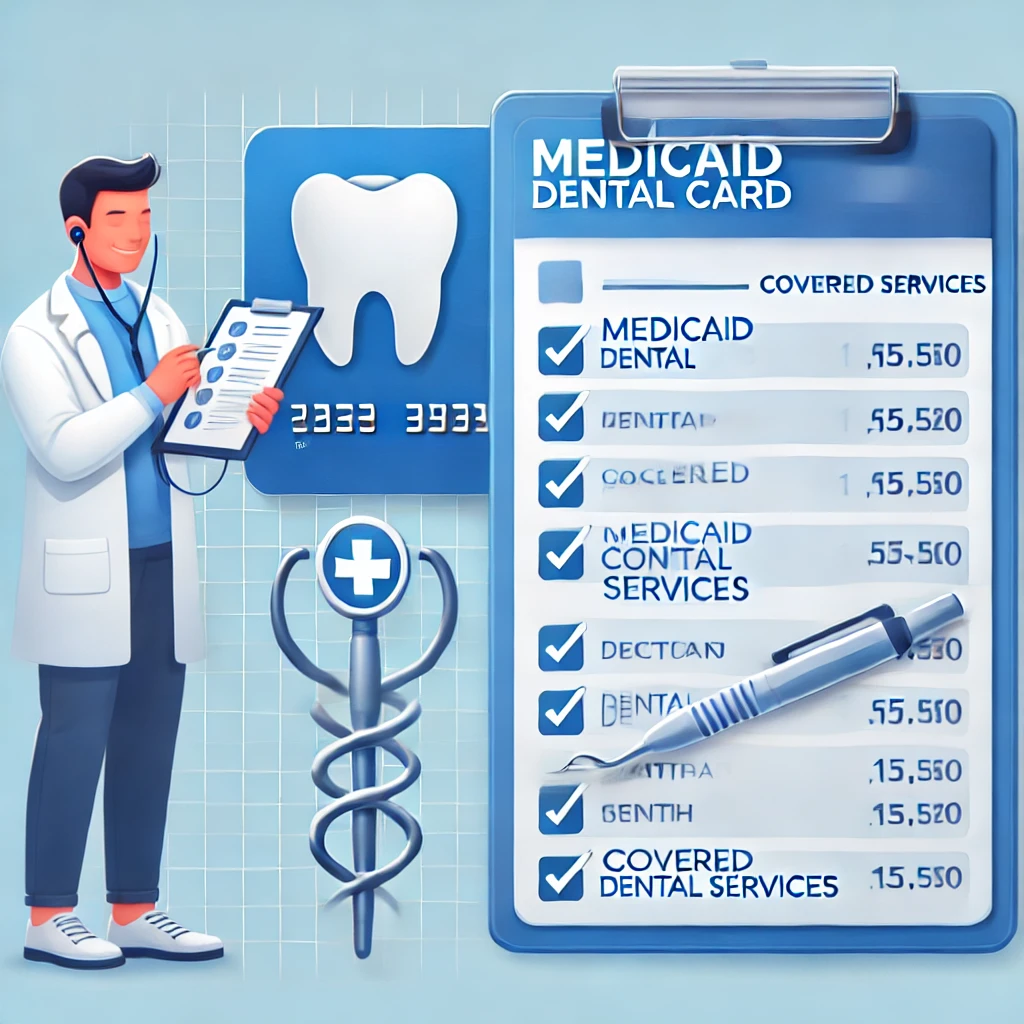Medicaid is a government-funded healthcare program that provides medical assistance to low-income individuals and families. One common question people ask is: Does Medicaid cover dental services? The answer depends on various factors, including the state you live in, your age, and the specific services required. In this detailed guide, we will explore Medicaid’s dental coverage, eligibility criteria, state-wise variations, and how to maximize your benefits.
What Is Medicaid?
Medicaid is a joint federal and state program designed to provide healthcare coverage to eligible low-income individuals. The program covers various health services, including doctor visits, hospital stays, prescription medications, and, in some cases, dental care.
Does Medicaid Cover Dental Care?
Medicaid Dental Coverage for Adults
Medicaid coverage for adult dental services varies by state. While some states offer comprehensive dental benefits, others may only cover emergency procedures. Generally, Medicaid dental benefits for adults fall into three categories:
- Comprehensive Coverage – Includes preventive care, restorative procedures, and emergency services.
- Limited Coverage – Covers only certain procedures, such as extractions or fillings.
- Emergency-Only Coverage – Covers dental services required for pain relief and infection treatment.
Medicaid Dental Coverage for Children
Under the Early and Periodic Screening, Diagnostic, and Treatment (EPSDT) program, Medicaid is required to provide dental benefits for children. This means children under 21 who are enrolled in Medicaid will receive comprehensive dental care, including:
- Preventive services (cleanings, fluoride treatments, sealants)
- Diagnostic services (oral exams, X-rays)
- Restorative services (fillings, crowns)
- Orthodontic services (if medically necessary)
- Emergency dental care
What Dental Services Does Medicaid Cover?

Preventive Care
- Routine dental exams
- Cleanings
- Fluoride treatments
- Dental sealants
Diagnostic Services
- X-rays
- Oral evaluations
Restorative Procedures
- Fillings
- Crowns
- Root canals
Surgical Procedures
- Tooth extractions
- Gum surgeries
Emergency Dental Services
- Treatment for oral infections
- Pain management
Orthodontic Care
- Braces (for children if medically necessary)
State-Wise Medicaid Dental Coverage
Each state has different Medicaid policies regarding dental care. Below is a brief look at dental coverage across different states:
| State | Adult Dental Coverage | Child Dental Coverage |
|---|---|---|
| California | Comprehensive | Comprehensive |
| Texas | Emergency-only | Comprehensive |
| New York | Comprehensive | Comprehensive |
| Florida | Limited | Comprehensive |
| Illinois | Comprehensive | Comprehensive |
| Ohio | Limited | Comprehensive |
| Georgia | Emergency-only | Comprehensive |
For the most up-to-date information, check your state’s Medicaid website.
How to Find a Medicaid Dentist
- Check Your State’s Medicaid Website – Find a list of approved dentists.
- Use Medicaid’s Provider Directory – Many states have online directories.
- Call Your Medicaid Office – Speak with a representative for recommendations.
- Ask Local Clinics – Community health centers often accept Medicaid.
How to Apply for Medicaid Dental Benefits
To apply for Medicaid dental coverage, follow these steps:
- Check Eligibility – Visit your state’s Medicaid website to see if you qualify.
- Gather Required Documents – You may need proof of income, residency, and identity.
- Complete an Application – Apply online through HealthCare.gov or your state’s Medicaid office.
- Submit Your Application – Submit it online, by mail, or in person.
- Wait for Approval – Processing times vary by state.
Medicaid vs. Medicare Dental Coverage
Many people confuse Medicaid and Medicare when it comes to dental benefits. Here’s a quick comparison:
- Medicaid – Provides dental coverage based on state regulations and income eligibility.
- Medicare – Generally does not cover dental services, except in rare cases where dental treatment is part of a covered medical procedure.
Alternative Options for Low-Cost Dental Care
If Medicaid does not cover the dental care you need, consider these options:
- Community Health Clinics – Many offer free or low-cost dental services.
- Dental Schools – Provide affordable care from supervised dental students.
- Discount Dental Plans – Offer reduced fees for dental services.
- Non-Profit Organizations – Some charities help cover dental expenses.
Conclusion
Medicaid dental coverage varies based on factors such as state policies, age, and medical necessity. While children receive comprehensive dental care through Medicaid, adult coverage ranges from comprehensive to emergency-only services. To ensure you receive the necessary dental care, check your state’s Medicaid program, find an approved dentist, and explore alternative low-cost dental options if needed.
For the latest updates, always refer to your state’s Medicaid website or consult with a Medicaid representative. Taking proactive steps in understanding Medicaid dental benefits can help you maintain good oral health without financial strain.




Super